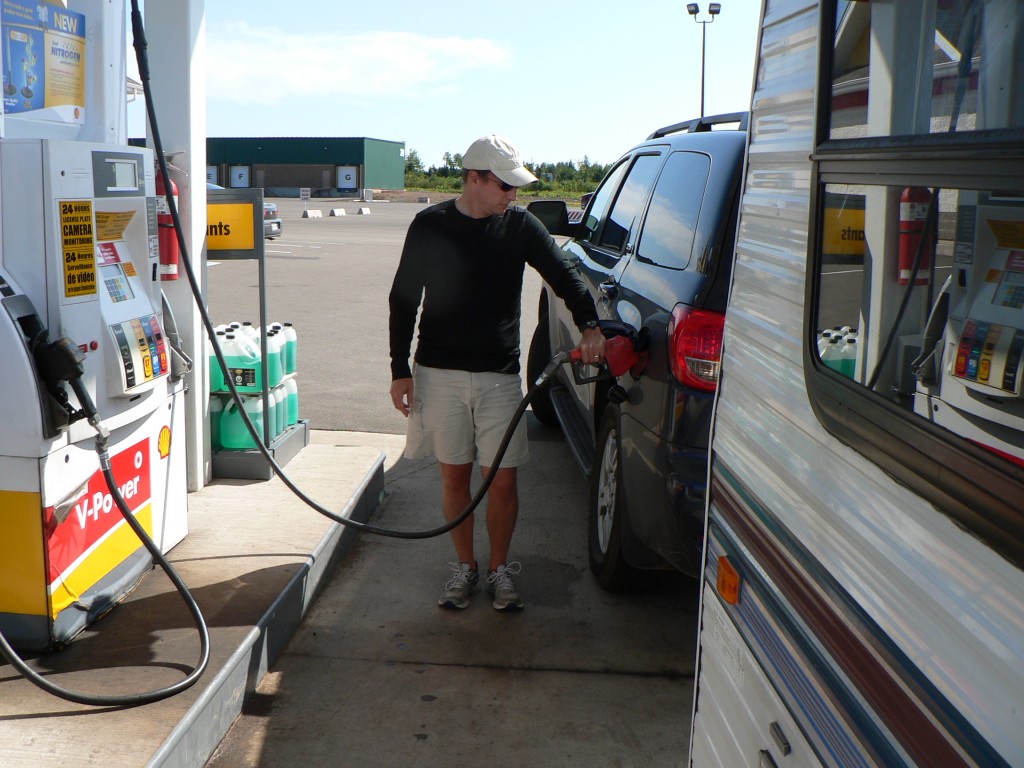Bye-Bye 2009: Worst Driving Experience of the Year
Story by John LeBlanc
Who knew? Apparently, RVing is a popular pastime with Canadians. According to data from GO RVing Canada, there are more than one million RVs (recreational vehicles) on our roads today. For the past three years, sales have increased 63 per cent.
But like other popular national pastimes (curling, Don Cherry, Tim Hortons drive-thrus, cardigans), please count me out as a fan. My ill will toward RVing came about after a family road trip hauling a travel trailer back and forth to Prince Edward Island last summer.
Nothing against the tow vehicle, a 2010 Toyota Sequoia SR5, one of my Top Utility Rides for 2010. New to the Sequoia lineup this year, its smaller-yet-more-powerful 310 hp, 4.6 L V8 replaces last year’s base 276 hp, 4.7 L engine. When not burdened with the added weight and increased length the trailer added, it felt relatively nimble. While a combined 13.8 L/100 km (20 m.p.g.) rating versus 14.4 L and a 3,175 kg tow rating, the Sequoia SR5 4.6 L offered an excellent balance of power and efficiency.
And nothing against the trailer that faithfully followed us to the Maritimes and back. The 1999 Mallard 27-foot model, loaned to us from the 1,000 Islands RV Centre in Gananoque, replaced the two motel rooms per night we would have had to rent along the way for our family of four and Grandma. But from the driver’s seat, towing an RV trailer was one of the most tiring, annoying and frustrating experiences I’ve ever had behind the wheel of a vehicle.
Don’t believe any RV zealot who says, “No worries. Driving an RV is just like driving a car.” They just want to share the pain.
Trust me. Driving a full-size SUV with a long trailer attached out back wasn’t a lot of “fun.” That is, unless your idea of fun is running a marathon. While piggybacking your best friend. Who’s had too many.
Granted. I may be stating the obvious here. Traveling with a larger, more accommodating vehicle isn’t so much fun to drive. However, we were counting on the extra savings from not booking those motel rooms as our reward. But in our experience this summer, that wasn’t the case. In fact, during the five days on the road it took traveling by trailer, the costs were almost twice as much as if we had left the trailer at home.
By far, the greater difference was in the amount of fuel we used. On flat terrain, the Sequoia’s trip computer was reading about double the SR5’s 11.1 L/100 km (26 m.p.g.) rating – or 22 L/100 km (13 m.p.g.). But on the steep and long grades through New Brunswick, we were averaging closer to 35 L/100 km (6.7 m.p.g.).
Why Greenpeace hasn’t targeted trailer parks as high-priority protest sites, I’ll ever know.
Comments
One Response to “Bye-Bye 2009: Worst Driving Experience of the Year”






![[del.icio.us]](https://www.straight-six.com/wp-content/plugins/bookmarkify/delicious.png)
![[Digg]](https://www.straight-six.com/wp-content/plugins/bookmarkify/digg.png)
![[Facebook]](https://www.straight-six.com/wp-content/plugins/bookmarkify/facebook.png)
![[Google]](https://www.straight-six.com/wp-content/plugins/bookmarkify/google.png)
![[Reddit]](https://www.straight-six.com/wp-content/plugins/bookmarkify/reddit.png)
![[StumbleUpon]](https://www.straight-six.com/wp-content/plugins/bookmarkify/stumbleupon.png)
![[Twitter]](https://www.straight-six.com/wp-content/plugins/bookmarkify/twitter.png)
![[Email]](https://www.straight-six.com/wp-content/plugins/bookmarkify/email.png)
January 8th, 2010 @ 7:23 pm
I feel your pain John. We have a 4×6 utility trailer that we hauled to PEI and back in 2006. We were using a 2003 Saturn LW300 wagon with the 3.0L V6. We also had 4 bikes on the roof of the car. So much for the aerodynamics with those on the roof. I wouldn’t do any worse hoisting a sail and a jolly roger.
The LW300 doesn’t have a trip computer so I had to calculate Fuel economy manually at each fill up. In New Brunswick, on a windy day on our trip home, we got 17 m.p.g.
Not as bad as your Sequoia, but I was shocked when I made the calculation. Empty (no trailer or bikes) I can get close to 37 m.p.g. on the highway.